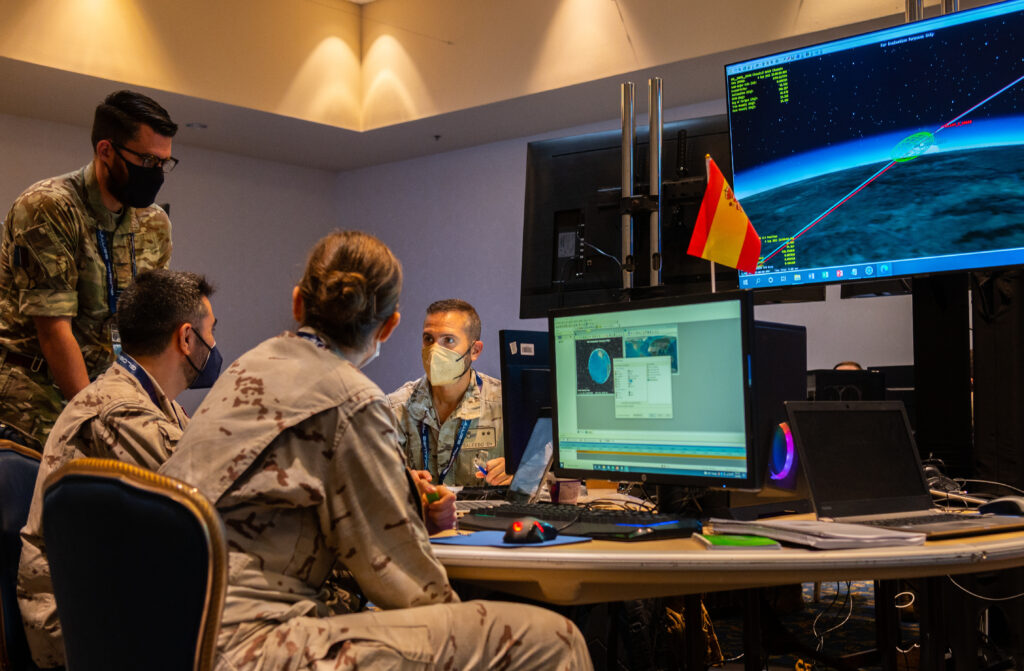Satellites
Orbits
November Space Council Meetings Could Shape Commercial Regulations


The National Space Council asked for comment on new commercial space systems and how the commercial space sector could be regulated during a pair of online meetings set for November. The council wants input from industry and the public. The move is part of a Biden Administration push to deal with issues including crowded orbits and the safety of space tourists.
Rivals Launch Military Satellites Amid U.S.-led Space Defense Drills


A flurry of military and intelligence satellite launches by rival powers this month came as the United States and two dozen partner nations wrapped up the largest global space defense wargame in history.
Russia launched what some leaders have described as a spy satellite for Iran and its own on-orbit snooping satellite Cosmos-2558, which is circling Earth in an orbit conspicuously close to a recently launched U.S. National Reconnaissance Office satellite, a Netherlands researcher confirmed.
2016 – Satellite Orbits – Snapshot
As in previous years, the most used orbit type is low Earth orbit (LEO). In 2016, 80% of the 219 spacecraft launched or deployed around the Earth were inserted into LEO. The effective range of this type of . . .
How the Space Foundation characterizes satellite orbits
This is a description of the Space Foundation methodology for classifying different satellite orbits with Earth at their focus.
2015 – Satellite Orbits – Snapshot
According to the Union of Concerned Scientists, a total of 1,381 satellites were still operational at the end of 2015. These satellites are mostly located in low Earth orbit (LEO) between 200 and 2,000 kilometers (124–1,242 miles) of altitude. LEO is home to 759 active satellites, or 55% of the total. This family of orbits remains the main orbital location of satellites due to the wide range of missions it allows and to the low energy required to reach it, which typically results in lower launch costs.
2014 – Satellite Orbits
According to the Union of Concerned Scientists, a total of 1,235 satellites were active at the end of 2014. These satellites are mostly located in low Earth orbit (LEO) between 200 and 2,000 kilometers (124–1,242 miles) of altitude. LEO is home to 655 active satellites, or 53% of the total.
2013 – Satellite Orbits
There were 1,165 active satellites in orbit at the end of 2013, all performing various missions depending on their configuration and orbit. Of all active satellites, 437 (approximately 38% of the total) were in geosynchronous equatorial orbit (GEO), an orbit 35,790 kilometers (22,240 miles) above the Equator, which allows satellites to circle the Earth exactly once per day, thus appearing to be fixed above a single point on the Earth’s surface, which is valuable in communications applications.
2011 – Satellite Orbits – Snapshot
The closer proximity to the Earth also greatly reduces signal delay from a LEO satellite to ground stations and allows for smaller receivers on the ground. While minimizing signal delay is not vital for DTH services or corporate networks, it makes the orbit ideal for voice traffic being sent directly to handheld devices. These lower orbits are challenging since the satellites constantly move in and out of view of individual ground receivers. If it is necessary to maintain a continuous link despite the movement of the satellites, a fleet of spacecraft is required to form a constellation.
2010 – Satellite Orbits – Snapshot
The closer proximity to the Earth also greatly reduces signal delay from a LEO satellite to ground stations and allows for smaller receivers on the ground. While these attributes are beneficial, these lower orbits are challenging in that these satellites constantly move in and out of view of individual ground receivers. If it is necessary to maintain a continuous link, a fleet of spacecraft is required to form what is called a satellite constellation. LEO is home to communications constellations belonging to mobile satellite services companies such as Iridium and Globalstar.
2009 – Satellite Orbits – Snapshot
Satellites provide a perspective of the Earth that cannot be matched by ground-based technology. In the early days of the Space Age, satellites served little purpose beyond demonstrating that they were in orbit. Decades of experience and technological advancement have yielded sophisticated craft that perform multiple essential missions for militaries, government agencies, and companies around the world. Modern satellites are specialized vehicles designed typically to serve a single specific mission, such as communications, meteorology, remote sensing, scientific measurements, navigation, or reconnaissance.